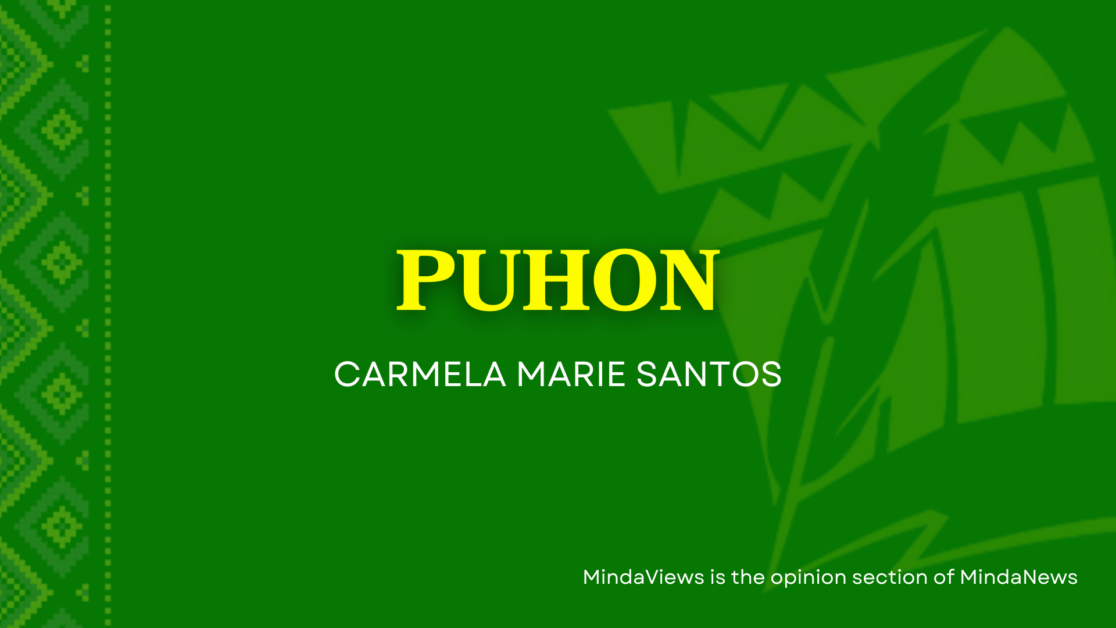
DAVAO CITY (MindaNews / 30 June) — Imagine your house getting burned down, with the fire razing down the entire street: make it the entire village.
And you had to move to the outskirts, somewhere far outside the city like BuDa: far from your school, or your place of work, your friends and community.
You would have to rebuild your life from scratch, build a new home, establish a new neighborhood, find another place to study or work, or basically to live your daily life.
Now, imagine yourself as the Philippine Eagle and your rainforest is all gone.
Imagine yourself as Nemo the clownfish, and your sea anemone, friends and the rest of the reef is wiped out.
Can you imagine how biodiversity and wildlife will survive without its natural habitat?
That is marine life now at the bridge alignment of the Davao-Samal Bridge or Samal Island-Davao City Connector (SIDC) Project.
As the bridge takes off from Davao side (beside Azuela Cove, property of the Dominic & Sons), 2,700 square meters of corals/spawning grounds at the Hizon marine protected area (MPA) will be gone. Nearly three hectares of corals and fish community drowned by sedimentation and siltation from the bridge construction. An asthmatic will not survive a day of continuous exposure to a car muffler spewing exhaust gas, what more for corals in five years’ time of construction?
As the bridge approaches the Samal landing (at the Lucas property between Paradise Reef and Costa Marina), it traverses the Paradise Reef ecosystem: which includes the 300-meter long Paradise Reef, and the approximately three-hectare area of the foreshore of the landing site and the Pakiputan reef combined.
Total coral footprint is six hectares, in addition to the 18 kilometer-reach of sediments (from Arboles shoal at the North, to Talicud island, south) as per the SIDC Project Study.
And all for what? A bridge that spans the distance of 2,830 meters crossing, or less than three kilometers. The frequent cross channel swims from Davao to Samal (participated even by swimmers 10 y/o below) prove the point of how short the distance is compared to the wide radius of its environmental impacts. I myself tried swimming the crossing for the first time last March (with a swimming club) and it took only 50 minutes from Cuaco to Paradise, given the strong currents. A boatride takes much less, seven to eight minutes from Paradise sakayan.
This begs the question, WHO identified this alignment and WHY there?
Answer: Hongkong-based Arup did. Not Dabawenyos or Samaleňos. Not even Filipinos.
How did they identify the alignment?
They looked at Google maps and found vacant spaces on both sides of Davao and Samal. (I kid you not!)
This was information shared by the Davao-based subcontracted group by Arup, when asked by the Dominic & Sons group. They asked why their property was chosen when it was on a 50-year lease with SM Prime Holdings (which was set to build a mall in the area). The answer given: Google maps.
What happens now when the corals are gone? Fish will have no place to lay their eggs and no nursery for the fingerlings to grow.
The big fish will no longer have smaller fish to eat.
Our fisherfolk will have to go much farther than Davao Gulf to catch fish (and where could this be? Sarangani? Sulu?)
Fish will either be super-expensive or there will be zero-to-none available in the local markets.
There goes the livelihood of our fisherfolk and small vendors and food processors.
There goes our local food security: with expensive rice, and expensive fish, what will be left on our tables?
There goes our climate security: Are not corals known to be rainforests of the sea? Corals help in regulating sea temperatures and they help in managing storm surges, especially in storm-surge prone Pakiputan reef.
Also, corals have a synchronized spawning event. Eradicating corals in one area of the Gulf, means reducing corals reproduction on the other side of the Gulf and even at the Sulu-Sulawesi Sea.
Ask Google: mass spawning event of corals.
Oh, did I mention that bridge and corals damage aside, we took out a PhP 19 billion loan from China?
This and more in the next column!
Maybe next time, there will be good news and update for the corals?
Puhon.
About this column title, as an adopted Dabawenya and having lived in Manila and Bacolod, the term “puhon” has always struck me as uniquely Davao. I love its positivity and faith in Divine movement. It is forward-looking and full of optimism. It reeks of hope. We all need a healthy dose, if not extra shots of hope in these times, in Mindanao and our country.
(MindaViews is the opinion section of MindaNews. Carmela Marie Santos is an environmental practitioner with a background in environmental science and management. She is a licensed environmental planner, a bike commuter and mother of three).
